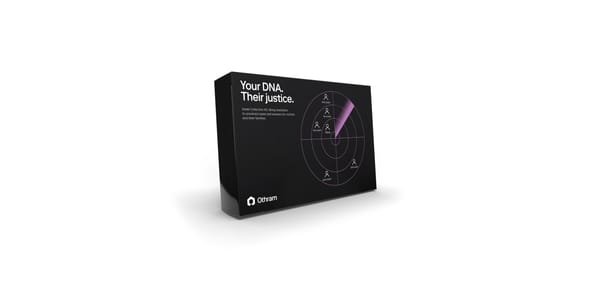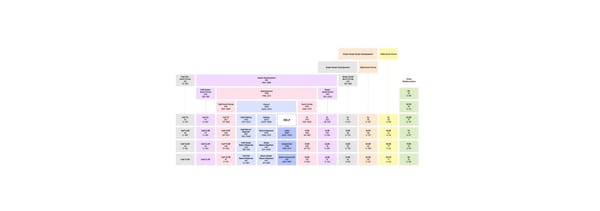Seven years in, forensic genetic genealogy (FGG) no longer is considered “new,” “emerging,” or “the Wild West.” The field has matured, with the benefit of hindsight, experience, and more refined, purpose-built technology. With this maturity comes responsibility: the methods that are used, the trusted tools, and the way results are reported must stand up to scrutiny.
At the heart of nearly every successful FGG case is reference DNA testing. Testing close or distant relatives who are not directly involved in the case provides key evidence needed to confirm hypotheses generated from genealogical research. However, FGG is not just about solving a case quickly — the methods must be grounded in solid peer-reviewed science that prioritize privacy, data protection, and statistical rigor. The results must stand up in court and peer scrutiny. Getting it right is essential if FGG is to remain a trusted and sustainable investigative tool.
Why Reference Testing Matters in FGG
The workflow for FGG investigations mirrors that of standard DNA typing in several ways: biological evidence is located, DNA is extracted and quantified, and a DNA profile is generated. The main difference is that a comprehensive single nucleotide polymorphism (SNP) profile is built using techniques such as whole genome shotgun sequencing or genotyping instead of traditional short tandem repeat (STR) typing. This dense SNP profile can then be compared against genealogical databases containing DNA profiles from donors who have consented to law enforcement use.
Once potential kinship associations are identified, investigators turn to genealogical research to expand family trees and locate common ancestors. However, family trees alone rarely point to a single, unambiguous identity. Hypotheses often remain, especially in cases involving multiple possible branches or distant relationships.
Reference testing is strategic to resolving hypotheses. By collecting DNA from potential relatives, investigators can:
- Confirm or refute kinship associations suggested by database associations.
- Refine and narrow family trees, making it easier to place the unknown individual in the correct branch.
- Accelerate identifications by focusing investigative efforts on the most promising hypotheses.
- Resolve ambiguities in cases where multiple interpretations remain plausible.
SNP reference testing of third-party individuals is especially valuable in guiding genealogical research toward the correct or most plausible line of descent. Although these donors are not persons of interest, their participation is critical to testing hypotheses in FGG investigations. With the help of these participatory donors, investigators can move quickly from a broad set of possibilities towards a precise and defensible identification. Othram leads the forensic field in best-in-class deployment of reference DNA testing and other pairwise SNP comparisons. Our workflows and methods are published publicly for everyone.
Protecting Third-Party Donors in Practice
Most reference DNA donors are not suspects; they are relatives who volunteer to help an investigation. Their data deserve the highest level of protection and privacy. Without trust, donors may hesitate to participate, and without their participation, some cases may never be solved.
Different countries have adopted varying policies and legislative frameworks for handling genetic data. Regardless of the jurisdiction, protecting donor privacy should be a universal best practice. At Othram, we have seen firsthand that families and communities are more willing to participate when they know their data will remain private, secure, and used only for its intended purpose.
Privacy protection is not just about policy — it requires technical safeguards and disciplined laboratory practice. Several measures are especially important:
- Keep comparisons offline: Perform one-to-one SNP comparisons locally, without uploading donor profiles to online tools or databases. This essential practice ensures donor data never leaves the laboratory environment and does not have to be shared with outside entities.
- Accelerate testing workflows: Use rapid SNP testing methods to reduce the need to pursue multiple hypotheses simultaneously, minimizing the number of donors who will be tested.
- Secure reporting: Encrypt data and control the level of detail shared, especially when results enter the judicial record, to balance investigative utility with genetic privacy.
To support these safeguards, Othram has developed SNPSuite, a purpose-built offline software solution for secure forensic DNA analysis. SNPSuite enables kinship comparisons and reporting entirely within a controlled environment, ensuring donor data are protected while delivering actionable results. It is easy to use, you don't need the cloud or any specialized server or equipment. It runs on any computer you already have. This kind of purpose-built technology reflects the maturity of the field, which is moving beyond improvised methods toward validated, forensic-first solutions.
To support investigators that do not have access to a lab or to software like SNPSuite, Othram has for years offered KinSNP® rapid relationship testing a complete solution that includes a DNA collection kit, laboratory service, and forensic reporting, specifically designed for law enforcement use. KinSNP® is scientifically validated for forensic applications, and results are delivered in days rather than weeks, providing investigators with fast, defensible answers that can substantially accelerate casework.
Statistical Rigor and Legal Defensibility
FGG must be able to guide investigations while being sufficiently robust to withstand scrutiny in court. A mature statistical framework is requisite. One of the most familiar approaches is the likelihood ratio (LR).
An LR is not the only way to establish quantitative assessments of relatedness, but it is a powerful and a well-accepted one. LR testing has been used for many years in STR analysis, where it has become the gold standard for quantifying support, for example, with kinship hypotheses. Extending this framework to SNPs provides continuity with established forensic practices while enabling the richer information content of modern genome sequencing.
LR calculations express how much more likely the observed DNA evidence is under one hypothesis than another. For example, an LR of 1,000 means the DNA evidence is 1,000 times more likely if the tested individual is the biological relative (according to the proposed relationship) than if the two individuals are unrelated. Numbers greater than 1 support the relatedness hypothesis; numbers less than 1 support the alternative hypothesis. This simple ratio provides a clear, quantitative measure that can be understood by investigators, courts, and juries alike.
Othram recently published a method for calculating LRs with SNP data — an open approach, freely available for all to use, build upon, and improve. This approach and others to come are key to standardizing a statistical framework for SNP testing. Just as STR testing became dependable and trustworthy through defined interpretation strategies, SNP testing can follow the same path. Only with rigorous, transparent methods can FGG remain both scientifically sound and legally defensible.
Toward Best Practices in Reference Testing
Reference DNA testing is indispensable for FGG. It transforms genealogical hypotheses into confirmed identities, accelerates investigations, and strengthens the connection between DNA evidence and judicial outcomes. But with this power comes responsibility.
As the field matures, ad-hoc approaches are not acceptable. Forensic organizations must adopt best practices that combine statistical rigor and privacy safeguards such as offline tools and data encryption. At Othram, we believe FGG is not a “last resort” but a core investigative tool; one that must be practiced responsibly! Our commitment is not to just solve cases, but to do so in a way that respects donor privacy, delivers strong forensic reporting, and ensures results are defensible in court.
Othram has solved more cases with FGG than any other group, giving us unmatched experience in safely turning DNA evidence into actionable leads. Our data and expertise allow us to benchmark, test, and refine every step of the process, continually advancing the technology. If you’re not ready to bring this capability in-house, just yet, then partner with Othram. Together, we can unlock answers and deliver justice where it’s needed most. Get started here.






